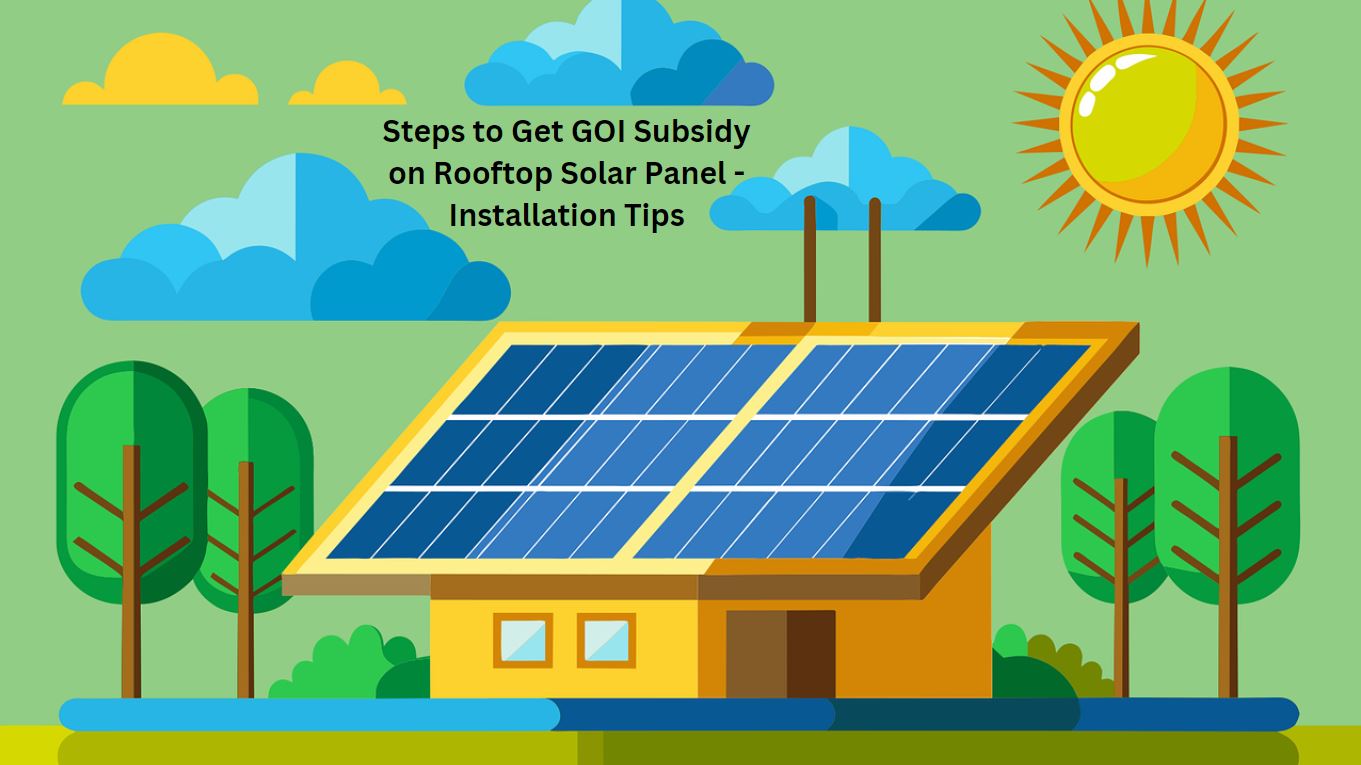- Likes
- Followers
- Followers
- Followers
- Subscribers
- Followers
- Members
- Followers
- Members
- Subscribers
- Subscribers
- Posts
- Comments
- Members
- Subscribe
Steps to Get GOI Subsidy on Rooftop Solar Panel – Installation Tips

The Indian government’s rooftop solar scheme is called the “PM Surya Ghar: Muft Bijli Yojana.” The purpose of this program is to incentivize individuals to mount solar panels on their roofs in order to support the use of renewable energy sources and benefit households. The government provides families with up to 3 kW of rooftop solar system installation subsidies under this program. For systems with a capacity of up to 2 kW, the subsidy pays 60% of the total cost; for systems with a capacity of between 2 and 3 kW or more, it pays 40% of the additional cost. For a 1kW system, the subsidy amount is approximately Rs 30,000; for a 3kW or larger capacity system, it is Rs 78,000.
Households must also use solar panels that are “Made in India” and have the system installed by a vendor listed on the portal who has been approved by the government. In particular in rural areas, the program enables households to make money by installing charging stations for electric cars and two-wheelers. Applying for this plan involves going to the official website given below where users can complete a series of steps that include registration, approval of the feasibility, installation, net metering, and receipt of subsidies.
Steps to Get Government Subsidy on Rooftop Solar Panel
You can do the following actions to be eligible for a Government of India rooftop solar panel subsidy.
- Sign Up Online
Go to the PM Surya Ghar Muft Bijli Yojana official website and register for the scheme by providing your email address, mobile number, and consumer number, and choosing your state and electricity distribution provider. - Application Process
Enter your customer number and mobile phone to log in to the portal. Apply for the rooftop solar program via the online form by doing the following.- Go to website PMSuryaGhar site (https://pmsuryaghar[dot]gov[dot]in/)
- Click on Apply for Rootop Solar
- If you’re not registered earlier then register here with selecting your State name then select name of electricity distribution company, give registered mobile Number with the electricity distribution company, your email and consumer number
- Once registered, then login using your mobile and consumer number
- Select the Rooftop Solar panel options as per your need
- Feasibility Approval
Await the DISCOM (Electricity Distribution Company) technical feasibility approval for the next fifteen days. - Installation
After being approved, you can refer the registered suppliers list from the portal, contact them to install the solar system. - Net Metering
Apply for net metering after installation, and the DISCOM will handle your request from there. - Inspection and Certification
After the plant has been examined and all regulations have been fulfilled, a commissioning certificate will be given. - Subsidy Disbursement
The subsidy amount will be credited to your account within 30 days of the installation being completed if you submit your bank details and upload a cancelled check through the portal.
Posts You May Like
Through the Government of India plan, you can apply for and obtain a rooftop solar panel subsidy by following the above steps, which will increase the affordability and accessibility of solar energy for residential homes and above all you can make money and save money through the green energy.
Home Solar Panel Installation Tips
In order to achieve maximum performance and efficiency while installing solar panels on a roof, there are a few things to take into account. The following are the main procedures for installing solar panels on a roof.
- Examine Roof Conditions: Based on your roof’s age, condition, position toward the sun, amount of shade it receives, and slope, you can decide whether or not to install solar panels. Make sure the roof has enough support for the panels’ weight and is angled properly to receive the most sunlight possible.
- Determine Your Sunlight Exposure: Determine how much sunlight your roof receives in order to calculate the solar panels’ potential for energy generation. Increased solar radiation results in increased energy production and cost savings.
- Think About Roof Type: Different roof types could call for different solar panel installation techniques. Make sure the mounting system is appropriate for the type of roof you have to avoid damage and guarantee a safe installation.
- Select the Installation Technique: Depending on the circumstances surrounding your home, choose between installing ground-mounted or roof-mounted solar panels. The most popular choice for residential installations is rooftop solar, which provides an effective means of utilizing solar energy.
- Speak with Experts: Consult with solar experts or contractors to evaluate the compatibility of your roof, choose the best location for your solar panels, and make sure that your solar panels are in compliance with utility and municipal standards.
- Think About Your Financial Options: Take into consideration your financial status, state legislation, and utility policies when deciding whether to buy or lease a solar system. Renting a system has less up-front costs and maintenance obligations, but purchasing a system entitles you to the electricity generated, tax benefits, and other incentives.
Installing solar panels on your roof is a simple way to harness solar energy, save your electricity costs, saving money and support environmental sustainability.
Image credit- Canva


Comments are closed.